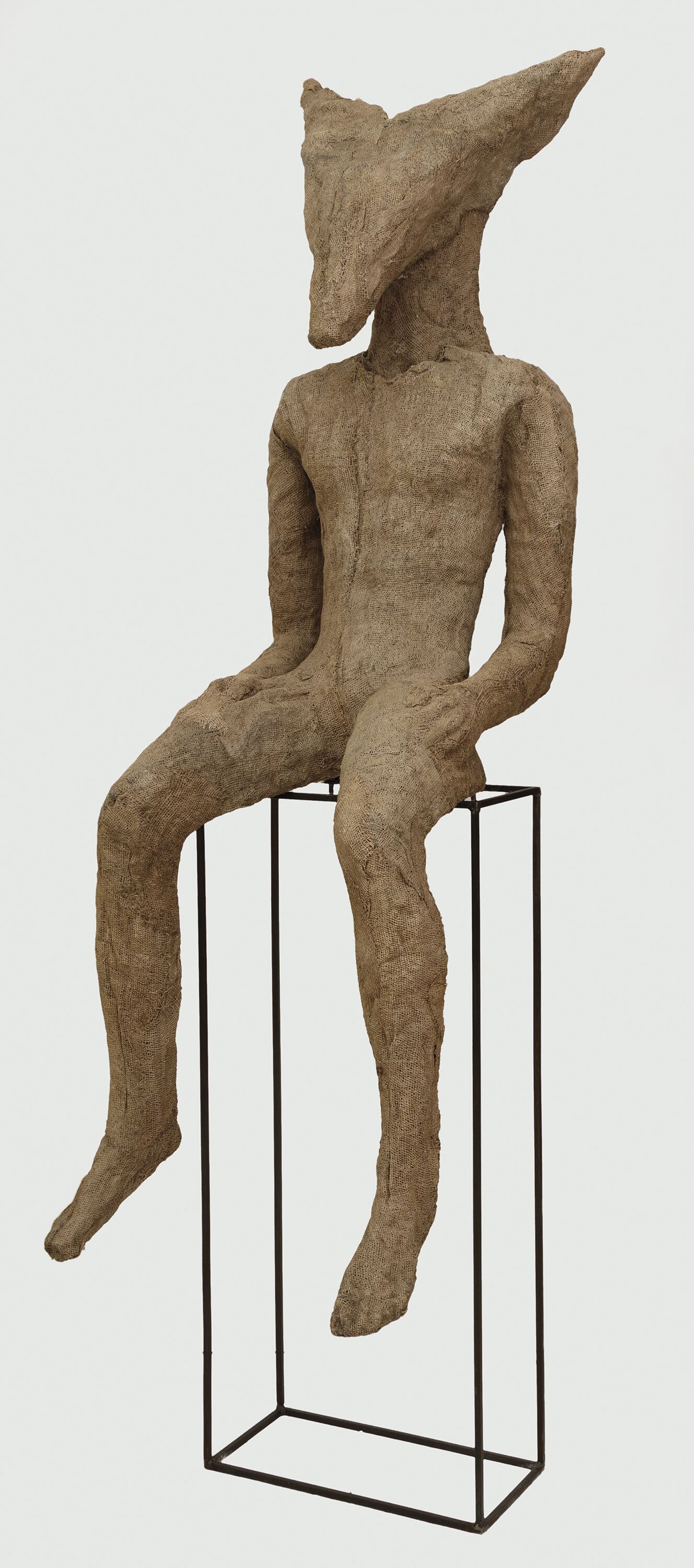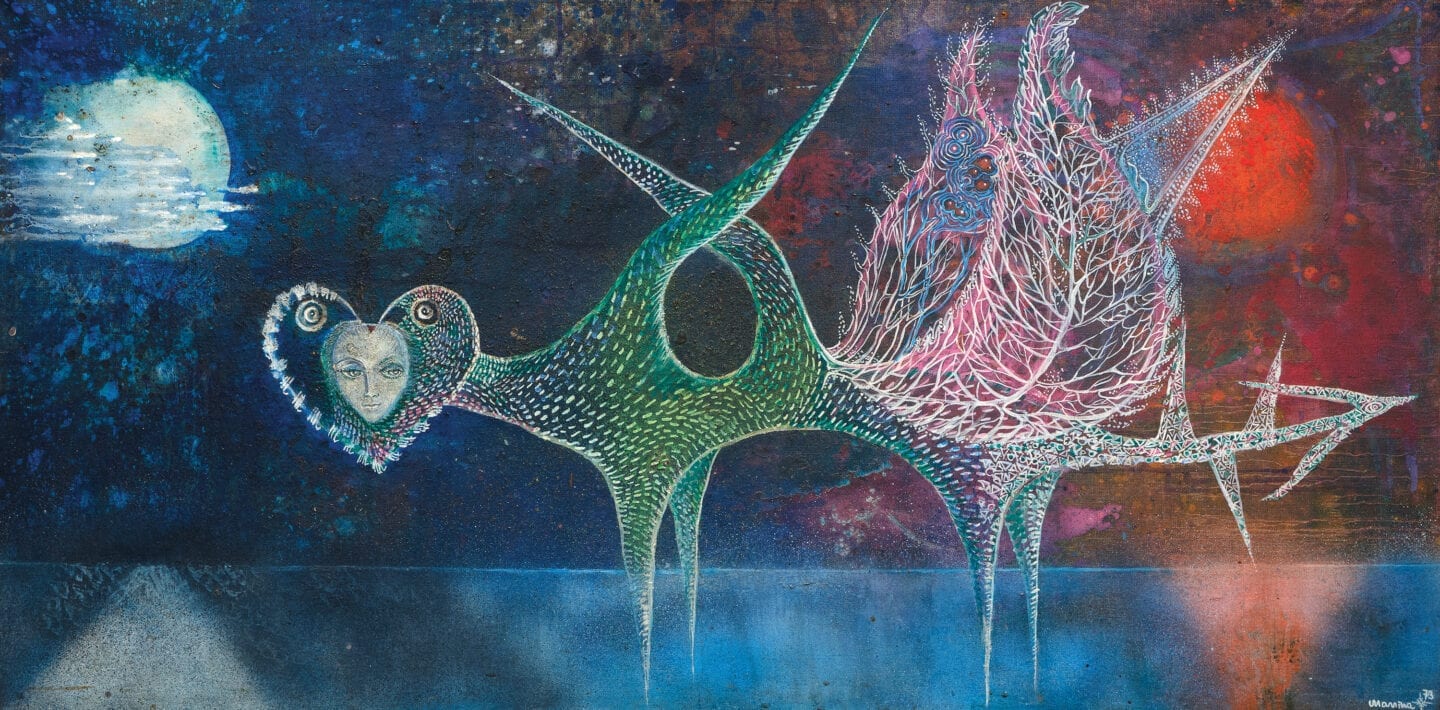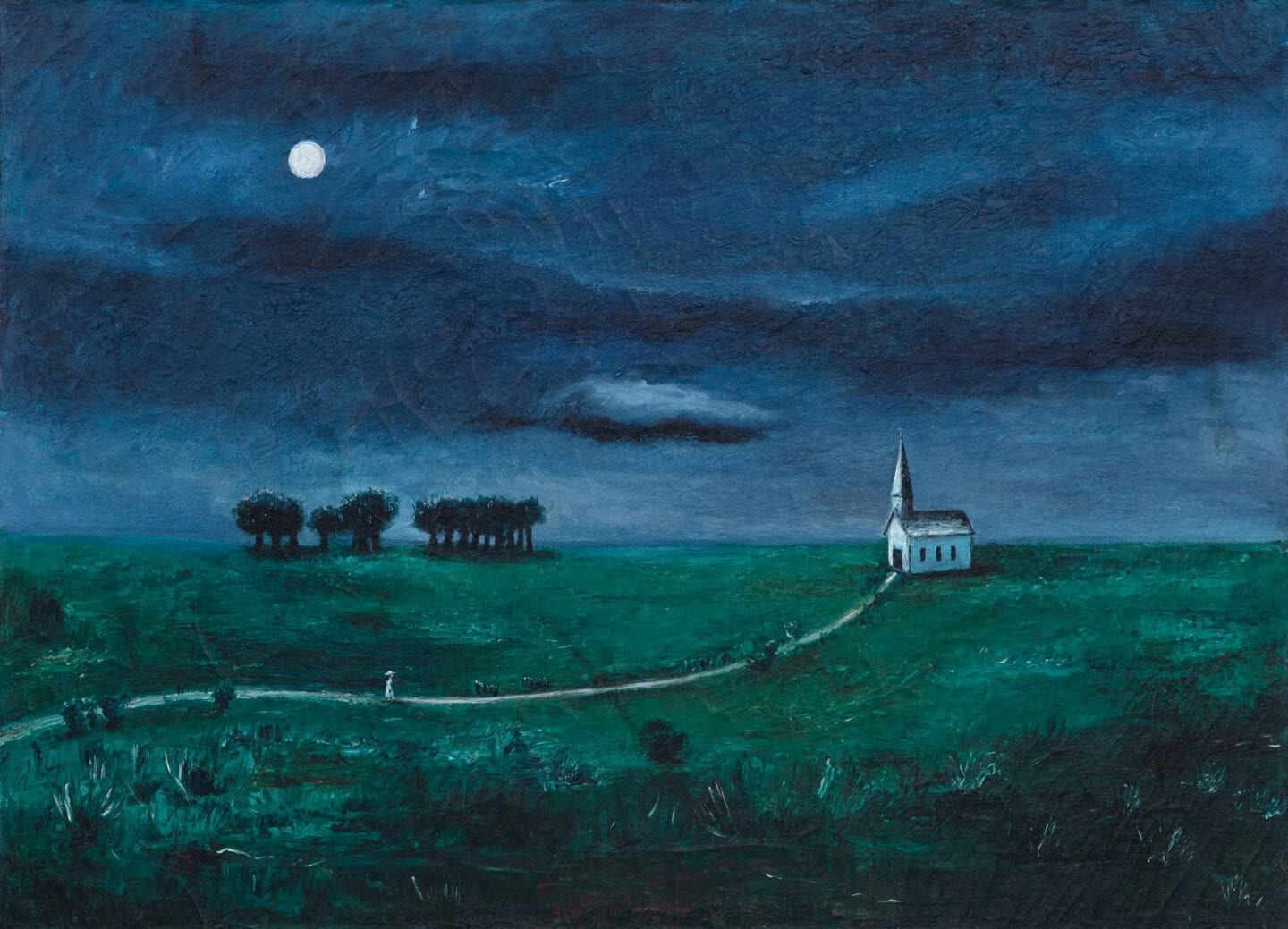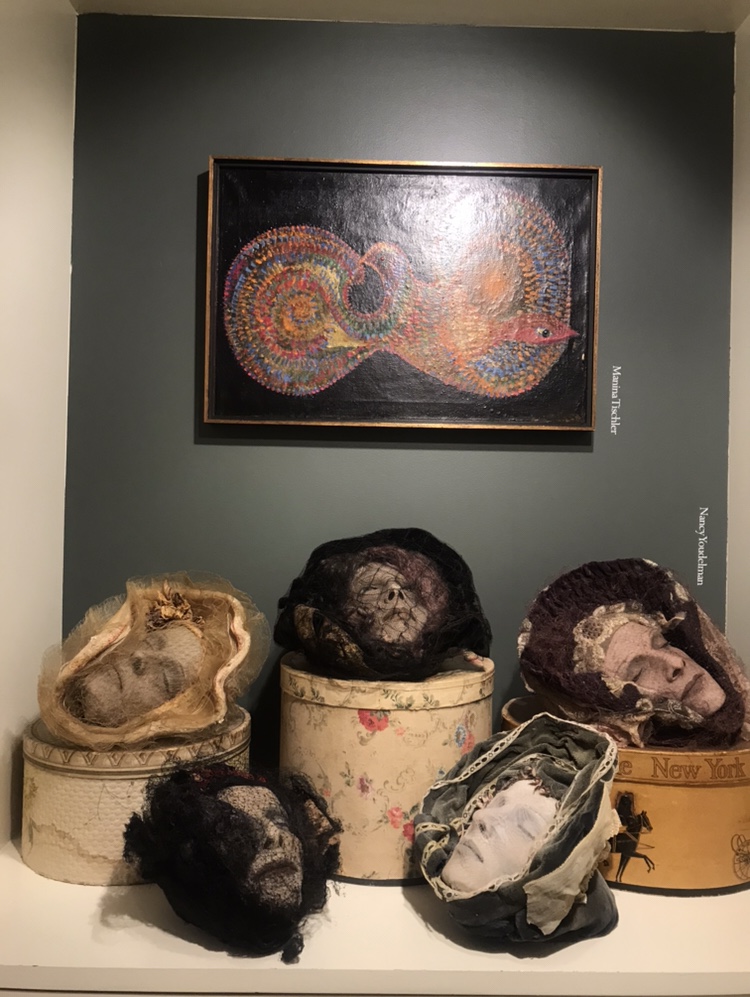The Female Gaze: Women Surrealists in the Americas and Europe


Heather James Fine Art presents female surrealists across the globe at its newest exhibition in New York, on view until July 31st.
While Surrealism’s revolutionary tenets called for unlocking the mind and unleashing the subconscious, most of its leaders viewed the female form as an object of desire and fantasy. Embracing Sigmund Freud’s theory of “the dream-work,” the female figure became a subject rendered often disfigured, dismembered, or mythologized, as reflected in works by Max Ernst, Man Ray, René Magritte, and Salvador Dalí, among others. At Heather James Fine Art’s latest curatorial exhibition, The Female Gaze: Women Surrealists in the Americas and Europe, Director Montana Alexander flips the script and reframes art history by focusing exclusively on the pivotal role played by female artists.
Piercing through the male gaze, the show highlights leading female Surrealist artists from across the globe, featuring more than 50 paintings, sculpture, mixed media, and collages spanning from the 1930s to the present. Artists in this exhibition such as Leonora Carrington and Leonor Fini rebelled against the pervasive sexism of their time. Carrington, who was also a founding member of the women’s movement in Mexico during the 1970s, once declared, “I warn you, I refuse to be an object.”
Of the exhibition, Alexander says: “I gave a lot of thought to an all female show, and initially I actually didn’t want to call it ‘The Female’ something because I thought, why can’t we just call it ‘Surrealism in the Americas and Europe from 40s to today’? But it’s well in order to change the history of formerly marginalized people, so you have to talk about it and you have to bring it to light. We have to give [women] a leg up, especially in surrealism. I really feel like they’re giving a different view of it then we’ve been presented with for the past hundred years.”
At its New York location, Heather James Fine Art resides in an intimate, townhouse setting on the Upper East Side, displaying a museum-like atmosphere, specializing in the secondary market of early 20th century to contemporary art for private collectors and estates. We pay Alexander a visit where she gives us a private tour of the exhibition and names some of her top favorites from the show.
Leonor Fini

“Leonor Fini was an Argentinian artist who, like a lot of the women in this movement, were self taught. She went to Europe and became very successful. At the time she was hanging out with André Breton, Salvador Dalí, Renee Magritte, and all of the surrealists. She was really a part of that movement. There are other women in this show who would not say that they identify themselves as surrealists because André Breton had a really stringent view of what surrealism was and if you did not fall within that then he would potentially kick you out.
Fini is interesting because if you look at this piece in particular [Les jumeaux ingrats] you can see the influence of renaissance art or mannerism. She studied in Italy and Paris and so she would have seen a lot of that work. There’s three decades of paintings in here from her. That one behind us [L’envers d’une géographie] is from the 60s, and as you can see is a little bit more abstract.
All of her figures are female — very strong, powerful, ethereal, magical. If not female they are androgynous. And in this painting, which is called ‘The Ungrateful Twins,’ you see two androgynous figures who are completely ignoring this absolutely beautiful and captivating woman who we can see is maybe like a sprite or a spirit. They’re stepping on her hair and are not of her world, which perhaps Fini felt in life sometimes.”
Magdalena Abakanowicz

“This guy’s name is Koziel, and he is a figure made by Magdalena Abakanowicz. A curator friend of mine (Patryk Tomasziewski) worked on a show I did for Polish artists when we were opening the gallery. When I told him about this show in passing he said, ‘There are two artists that you have to include. It’s important to have Eastern European art in your show as well because this show has Western Europe and the Americas covered.’ And so she is one of the most important Polish sculptors.
Much of her material is industrial. This is made out of burlap sacks and resin. She made this series of anthropomorphic creatures who were meant to be individuals. As an artist, growing up in communism and experiencing post World War II Poland gave her the opportunity to represent identity in a different way. Most major private art collectors who show sculpture or female artists from the post-1940 era will most likely have Abakanowicz in their collection. She is one of the 20th century’s most under-recognized artists.”
Leonora Carrington

“We have work by Leonora Carrington, who was an English artist who lived most of her life in Mexico. She was all about the magical. She would go on to get to know shaman from Lapland and get really into the animal spirit world. Almost all of her work has these really freaky looking creatures. Like Carrington, a lot of the surrealists were all about automatism: automatic subconscious visions being a connection to a greater reality underneath our own.”
Aube Elléouët

“On this wall we have Aube Elléouët. She lives in Paris and is the daughter of André Breton, so she obviously grew up in the surrealist tradition. This is a really beautiful and kind of Joseph-Cornell-esque surrealism.”
Manina Tischler


“Manina is Italian, working mostly in Venice. She was brought to me through Gloria Orenstein, who’s an expert in female surrealism and did the introduction for our catalogue. Long story short, Gloria was teaching at the University of Southern California and when she connected with Manina, and found out the artist’s daughter was murdered on that campus a few years prior. Manina stopped making work when her daughter died and destroyed a lot of her own work. Again, there are similar lines you can draw to Leonora Carrington, a woman who painted through pain, painted through experience, and painted the subconscious world of magical creatures and the like.”
Helen Lundeberg

“This is an American artist named Helen Lundeberg who only did surrealism for a few years. These are from the 1940s. American surrealism is probably the least known about because surrealism was a European movement and Helen would go on to be known for mostly hard-edge Californian paintings. She was a fantastic surrealist as well.”
Gertrude Abercrombie

“Gertrude Abercrombie is a Chicago based surrealist artist who is really having her comeback recently. All of the works on this wall have one thing in common: a full moon. As women we are particularly connected to moon cycles because the way that our bodies work so I love that she puts it in all of them.
These all come from a single collection, not for sale, but I’m really happy to include them in the show because the way that we put them together can tell you a story of all of life, especially womanhood. I love that there are cats involved in a lot of them and then there’s the path in four of them where she’s walking along the path alone. All of them are at night, walking through the darkness or by the moonlight, which portrays a very feminine approach with a nod to the spirit world.
Gertrude Abercrombie painted as a passion and didn’t really care about what people thought about her work. All of her work is very narrative. It’s a different kind of magic than somebody who’s drawing…a little bit more in the area of Magritte instead of Dalinian.”
Teresa Pagowska

“This is another Polish artist named Teresa Pagowska. She treats the female body differently from a female point of view. I like this painting in particular because it reminds me of a dance and perhaps there are two figures in it, but the figures are raw canvas and they’re painted around.”
Dorothea Tanning

“Through the hallway are works by Dorothea Tanning, who was a very important member of surrealism, but she wouldn’t call herself a surrealist and would also probably be a little upset with me for putting her in this exhibition. Although she painted almost exclusively women, she never wanted to be known as a female artist. She didn’t like the qualifier before her name, which I can absolutely respect. In her works are all female figures who are intertwined in maybe violent, maybe sexual, dances.”
Nancy Youdelman

“These heads are by Nancy Youdelman, who’s a contemporary artist best known for her work from the 1970s, and they’re casts of her own face. She had this crazy idea when she was looking at a hatbox one day about women’s materials. She was a textile artist at the time, but she wanted to put herself into her art. She had this vision of her own head in a hat on a hatbox as an object. In a lot of surrealism, it’s men taking the female form and manipulating it into an object or something hyper-sexualized, so I like it when women take a different approach.”
Other artists in this exhibition include: Stella Snead (1910-2006), Alice Rahon (1904-1987), Kay Sage (1898-1963). Heather James Fine Art is located at 42 East 75th Street. www.heatherjames.com


